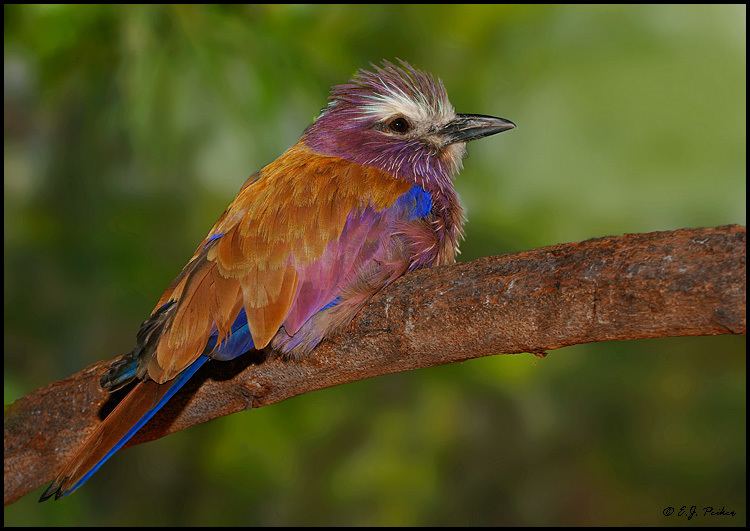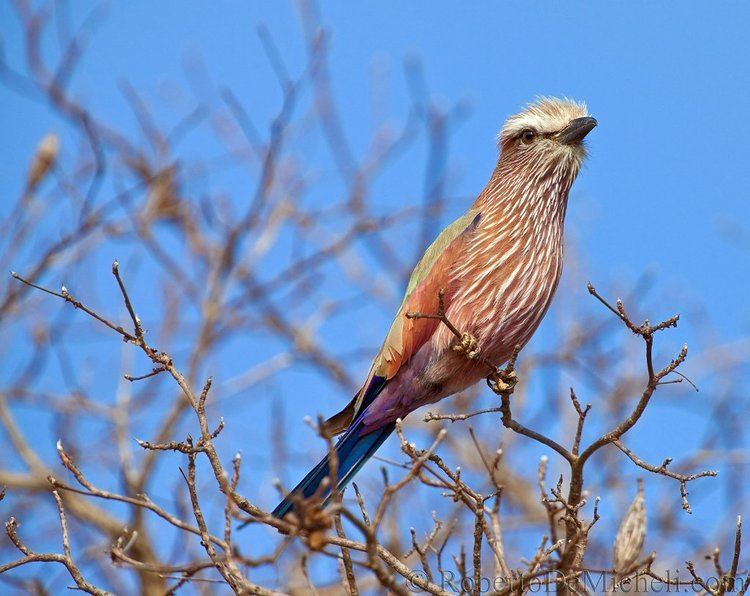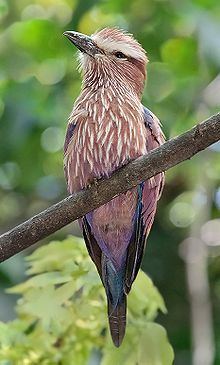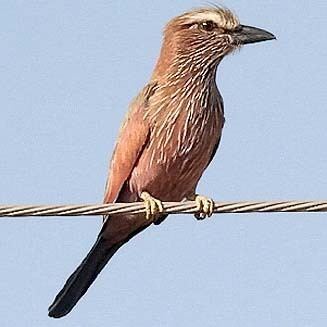Higher classification Coracias | Phylum Chordata Family Coraciidae Scientific name Coracias naevius Rank Species | |
 | ||
Similar Bird, Roller, Coracias, Cinnamon roller, Abyssinian roller | ||
Southern african birds purple purple roller feeds youngster at chobe botswana
The purple roller (Coracias naevius), or rufous-crowned roller, is widespread in sub-Saharan Africa. Compared with other rollers its colours are rather dull and its voice rather harsh and grating.
Contents
- Southern african birds purple purple roller feeds youngster at chobe botswana
- Purple roller
- Subspecies
- Description
- Behaviour and ecology
- References

Purple roller
Subspecies
Two subspecies are recognized:

Description

The purple roller is the largest of the rollers, growing to a length of 35 to 40 cm (14 to 16 in). From a distance it appears a dull brownish bird with a white stripe over the eye, a patch of white on the nape and a dark tail. Northern populations tend to have a rufus crown while southern populations have a more olive-green crown. The underparts are purplish-pink streaked with white. The wings are long and rounded while the tail is square-cut. The voice is a rather grating "ka" or "gaa", repeated rapidly and evenly.
Behaviour and ecology

Its preferred habitat is dry thornveld where it spends long periods perched at the top of thorn trees or poles, watching for food items such as insects, spiders, scorpions and small lizards on the ground. It rocks to-and-fro about its longitudinal axis during display flights, calling raucously all the while; starting from above the treetops it plummets towards the ground in rolling flight. It is territorial, and during the breeding season will drive off other rollers, small hawks and crows.

This species seems to be an opportunist breeder, possibly linked to rains, as its breeding season varies from place to place. It nests in natural hollows in trees or uses old woodpecker holes, or in cliffs, riverbanks, pipes or holes in masonry, usually laying three white eggs. The young are fed and incubated by both parents.

